
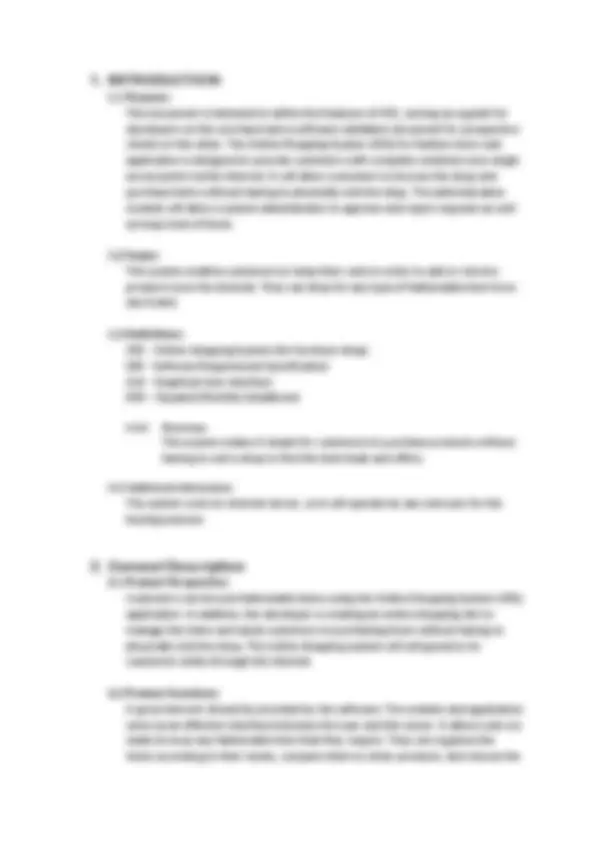
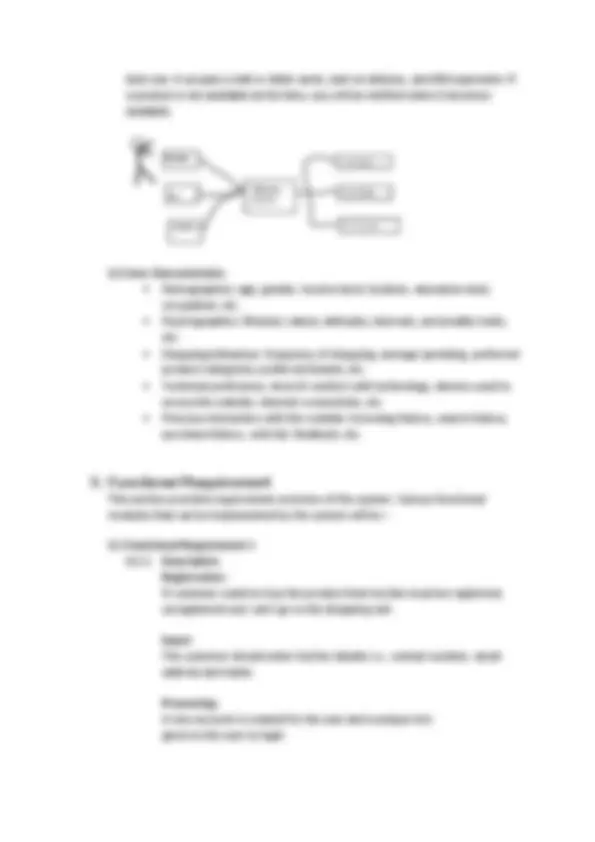
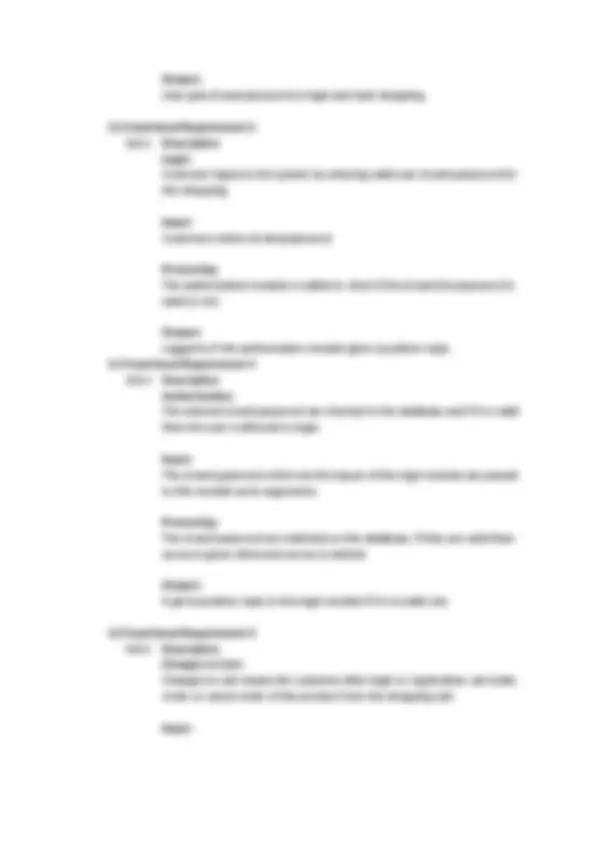
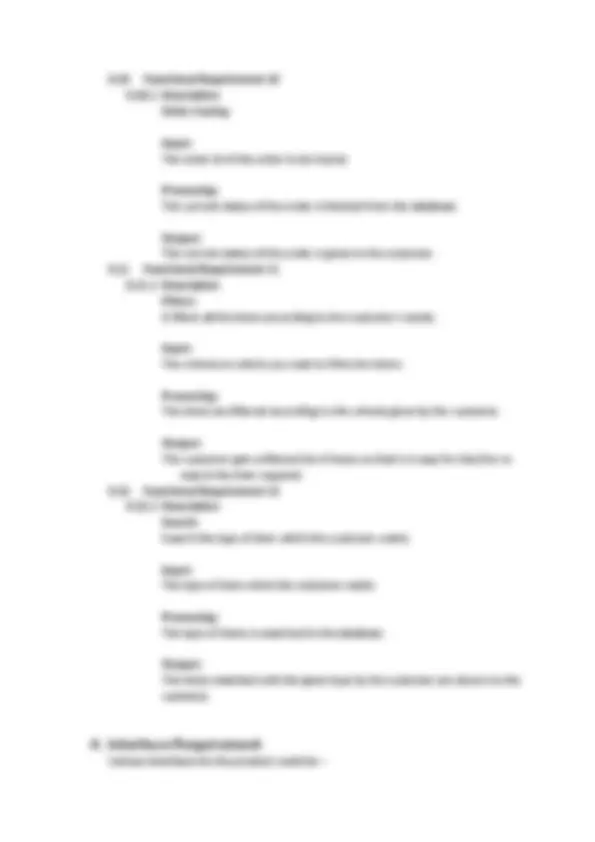
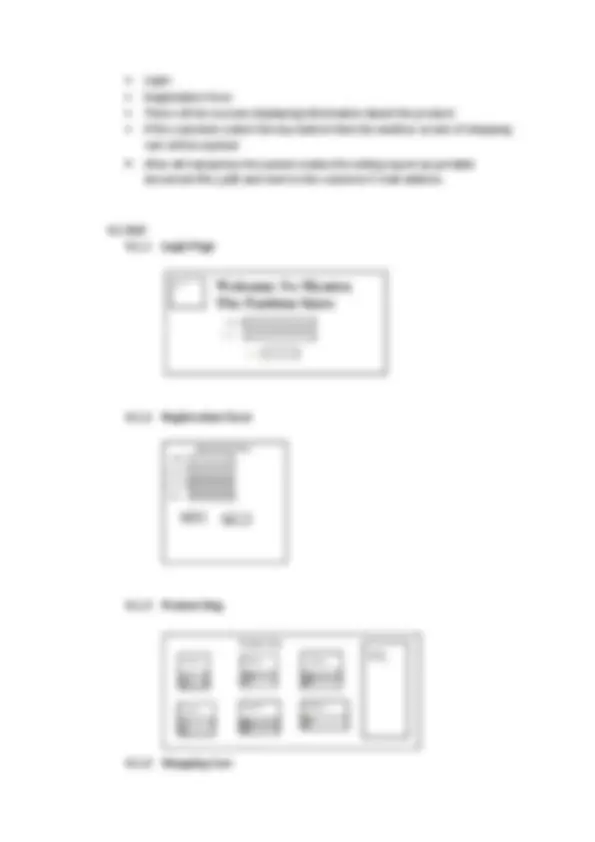
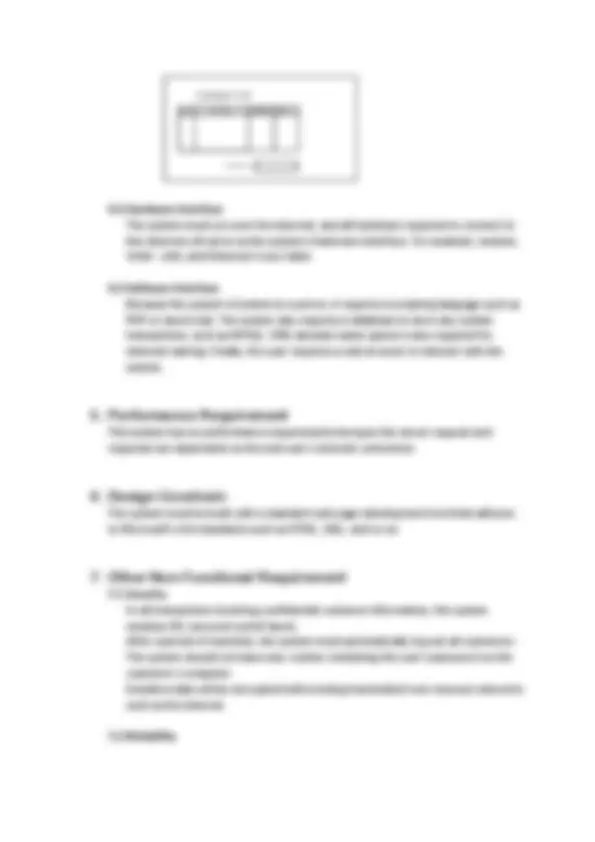


Study with the several resources on Docsity

Earn points by helping other students or get them with a premium plan


Prepare for your exams
Study with the several resources on Docsity

Earn points to download
Earn points by helping other students or get them with a premium plan
Community
Ask the community for help and clear up your study doubts
Discover the best universities in your country according to Docsity users
Free resources
Download our free guides on studying techniques, anxiety management strategies, and thesis advice from Docsity tutors
This is a Software Requirement Specification (SRS) of Myntra App
Typology: Assignments
1 / 12

This page cannot be seen from the preview
Don't miss anything!








On special offer
Submitted By: Submitted To: Harsh Rao Mr. Anurag Singh Reg No: 12205599 Roll no: 68 Section: K22BS
Other Non-Functional
best one. It accepts credit or debit cards, cash on delivery, and EMI payments. If a product is not available at the time, you will be notified when it becomes available. 2.3 User Characteristics Demographics: age, gender, income level, location, education level, occupation, etc. Psychographics: lifestyle, values, attitudes, interests, personality traits, etc. Shopping behaviour: frequency of shopping, average spending, preferred product categories, preferred brands, etc. Technical proficiency: level of comfort with technology, devices used to access the website, internet connectivity, etc. Previous interaction with the website: browsing history, search history, purchase history, wish list, feedback, etc.
This section provides requirement overview of the system. Various functional modules that can be implemented by the system will be – 3.1 Functional Requirement 1 3.1.1 Description Registration: If customer wants to buy the product then he/she must be registered, unregistered user can’t go to the shopping cart. Input: The customer should enter his/her details I.e., contact number, email address and name. Processing: A new account is created for the user and a unique id is given to the user to login
Output: User gets id and password to login and start shopping. 3.2 Functional Requirement 2 3.2.1 Description Login: Customer logins to the system by entering valid user id and password for the shopping. Input: Customers enters id and password. Processing: The authorization module is called to check if the id and the password is valid or not. Output: Logged in if the authorization module gives a positive reply. 3.3 Functional Requirement 3 3.3.1 Description Authorization: The entered id and password are checked in the database and if it is valid then the user is allowed to login. Input: The id and password which are the inputs of the login module are passed to this module as its arguments. Processing: The id and password are matched on the database, if they are valid then access is given otherwise access is denied. Output: It gives positive reply to the login module if it is a valid one. 3.4 Functional Requirement 4 3.4.1 Description Changes to Cart: Changes to cart means the customer after login or registration can make order or cancel order of the product from the shopping cart. Input:
3.7.1 Description Logout: After the payment or surf the product the customer will logged out. Input: The user presses the log out option. Processing: The cache memory of the user’s device is erased and the session of the user ends. Output: The user again comes back to login page. 3.8 Functional Requirement 8 3.8.1 Description Report Generation: After all transaction the system can generate the portable document file (.pdf) and then sent one copy to the customer’s Email-address and another one for the system data base to calculate the monthly transaction. Input: The bill generated after the payment is done. Processing: This invoice is sent to the customer’s email address with the order number. Output: The customer gets the invoice of his/her order. 3.9 Functional Requirement 9 3.9.1 Description Order number generation: An order number is a unique identification number given to every order. Input: The order of the customer. Processing: A unique order number is generated for every order. Output: The customer gets a unique order number for its order which it can trace.
3.10 Functional Requirement 10 3.10.1 Description Order tracing Input: The order id of the order to be traced. Processing: The current status of the order is fetched from the database. Output: The current status of the order is given to the customer. 3.11 Functional Requirement 11 3.11.1 Description Filters: It filters all the items according to the customer’s needs. Input: The criteria on which you want to filter the items. Processing: The items are filtered according to the criteria given by the customer. Output: The customer gets a filtered list of items so that it is easy for him/her to search the item required. 3.12 Functional Requirement 12 3.12.1 Description Search: Search the type of item which the customer wants. Input: The type of item which the customer wants. Processing: The type of items is searched in the database. Output: The items matched with the given type by the customer are shown to the customer.
Various interfaces for the product could be –
4.2 Hardware Interface The system must run over the internet, and all hardware required to connect to the internet will serve as the system's hardware interface. For example, modem, WAN - LAN, and Ethernet Cross-Cable. 4.3 Software Interface Because the system is hosted on a server, it requires a scripting language such as PHP or Java Script. The system also requires a database to store any system transactions, such as MYSQL. DNS (domain name space) is also required for internet naming. Finally, the user requires a web browser to interact with the system.
This system has no performance requirements because the server request and response are dependent on the end user's internet connection.
The system must be built with a standard web page development tool that adheres to Microsoft's GUI standards such as HTML, XML, and so on.
7.1 Security In all transactions involving confidential customer information, the system employs SSL (secured socket layer). After a period of inactivity, the system must automatically log out all customers. The system should not leave any cookies containing the user's password on the customer's computer. Sensitive data will be encrypted before being transmitted over insecure networks such as the internet. 7.2 Reliability
The system stores all databases on redundant computers with automatic failover. The overall program's dependability is determined by the dependability of its individual components. The backup of the database, which is constantly maintained and updated to reflect the most recent changes, is the system's main pillar of reliability. As a result, the overall system stability is dependent on the stability of the container and its underlying operating system. 7.3 Availability The system should be available at all times, which means that the user can access it via a web browser, with the only limitation being the downtime of the server on which the system runs. A replacement page will be displayed in the event of a hardware failure or database corruption. In addition, backups of the database should be retrieved from the server and saved by the administrator in the event of a hardware failure or database corruption. The service will then be restarted. It means "24/7." 7.4 Maintainability The database is maintained using a commercial database, and the site is managed by the application server. In the event of a failure, the programme will be re-initialized. Additionally, the software is being designed with modularity in mind so that maintainability can be accomplished efficiently. 7.5 Portability The application is HTML and scripting language based. As a result, the end-user component is fully portable, and any system using any web browser should be able to use the system's features, including any hardware platform that is currently available or will be available in the future. End users can use this system on any operating system, including Windows, Linux, and iOS. The system must be compatible with PCs, laptops, mobile phones, and tablets, among other devices.
The customer wishes to purchase the item. The system displays to the customer all product categories. If a customer selects an item, it is added to the trolley for purchase. Payment can be made by credit or debit card, cash on delivery, or EMI. If a customer wishes to cancel an order before it is shipped, he or she may do so. On the account detail page, the customer can view the purchasing report.